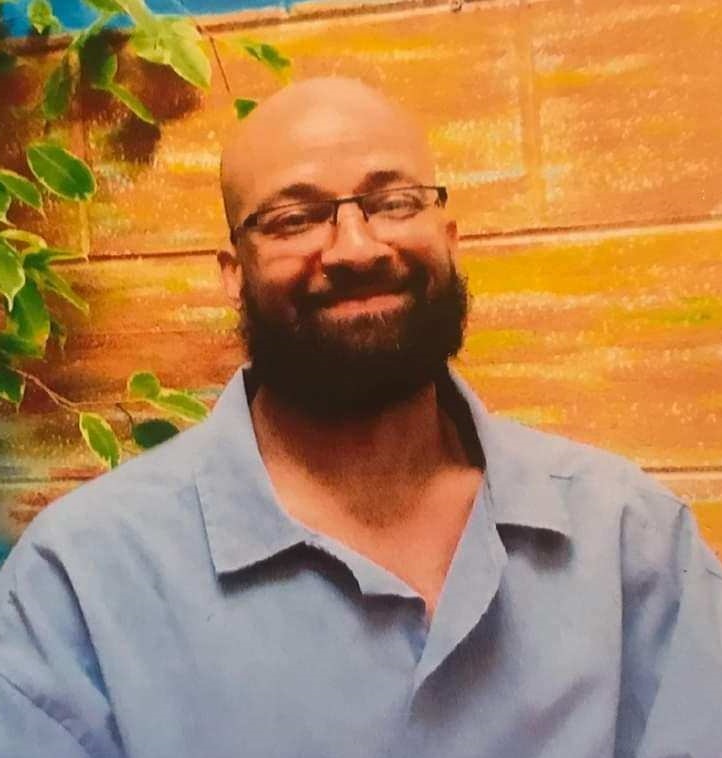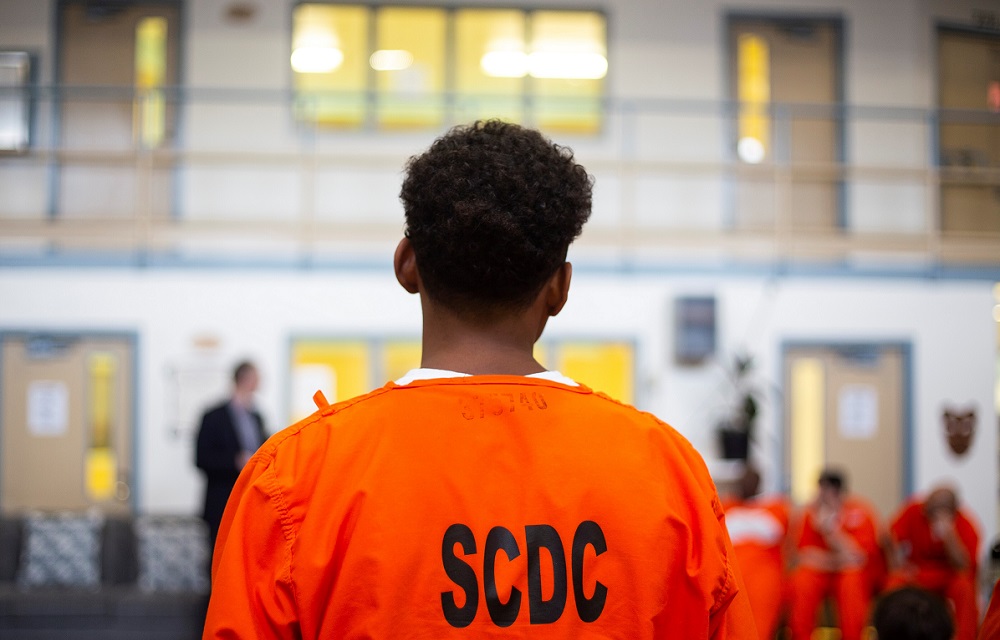“Hey, Khalil. Guess what? I got accepted.”
“That’s great news!” I responded to Quantae Priest, 26, who’d called out to me on the rec field of our high-security prison.
But his news wasn’t entirely good. I could tell from his face. We started to walk laps around the perimeter of the basketball and handball courts of Lee Correctional Institution in Bishopville, S.C.

Khalil A. Scott
“You already know what's going on,” he said. “I've established bonds here. I've let my guard down with guys here. I don't want to leave. But, at the same time, I have to.”
For a chance to earn a college degree while he’s incarcerated, Quantae has traded the matching color scheme and single-person cells of Lee’s young adult unit for concrete-gray quarters the size of a small bathroom that he now shares with another man at Ridgeland Correctional Institution. There, he’s been able to enroll at Clafin University, the only college in our state currently using federal Pell Grants to fund prison education. He had to leave behind the supportive community he’d been a part of at Lee.
Although happy for him, I hated to hear that Quantae would be losing all that. Until his April transfer to Ridgeland, Quantae was part of the Vera Institute of Justice’s Restoring Promise initiative for 18- through 25-year-olds. The program pairs those young adults with mentors, older prisoners like me, who are serving long sentences. We live with the young men on the unit and teach classes on topics including effective communication, conflict resolution and restorative justice. The young men learn life skills and deal with traumas that many of them had faced in their homes and communities before they were incarcerated.
Making prisons conducive to learning
Most prisons aren’t built to promote healthy, human transformation, let alone to help people pursue a higher education. Most prisons don’t create an environment conducive to learning. Before landing at Lee, I’d spent over three decades in other maximum-security lock-ups where I've drowned out a cellmate's radio or uncontrollable snoring with earplugs made of wet toilet paper — just so I could concentrate on what I was reading.
But, in our Lee unit, the cell that each of has to ourselves resembles a college dorm room, complete with a desk and chair to study. Residents can do their time without being hyper-vigilant about watching their backs. Community rules, set by us mentors, are supposed to keep everyone safe. There’s zero-tolerance for danger; a person caught with a makeshift shank immediately is removed from the unit.
Lee and Turbeville Correctional Institution are the two state prisons in South Carolina with these dedicated housing units. But they only offer GED instruction to those who want to finish their high school studies and vocational training. Those limited programs — for many of the young men we’ve been teaching life skills and ways to keep from reliving their trauma — will not quench the thirst to learn so much more.

Courtesy of Priest
Collegian Quantae Priest and a relative during GED grad day at Lee Correctional Institution.
Quantae isn’t the only young man in our unit aspiring to college and wanting what a college degree might contribute to his life. They share their hopes every Monday and Wednesday when we come together in a community circle to discuss concerns and celebrate wins. During a recent circle, when I polled the young men to see who would be interested in taking college classes, 27 of 33 among them shot a hand into the air.
The young men in our unit are the same age as traditional college students. They are missing out on a time in life when most people are figuring out who they are and mapping a future. Research shows that, compared with older adults, young adults lack emotional control and are more likely to act impulsively. But they also are more receptive to positive interventions, including higher education.
Ridgeland, a medium-security prison, where Quantae went to enroll in Claflin University’s courses and earn a bachelor’s degree, is part of the Second Chance Pell initiative. In 2015, under President Obama, that initiative restored need-based federal financial aid to incarcerated students. I'd just finished my own college program when we lost those grants during President Bill Clinton’s tough-on-crime lawmaking of the 1990s.
Learning as a path toward redemption
At 19, staring down a life sentence for murder, I began my long incarceration. Fortunately for me, men in a prison "lifers club" took me under their wings. As soon as I entered the institution, they introduced themselves. “You're young, you got a life sentence. There's no sense in you getting caught up with a bunch of foolishness. So, we're gonna help you out,” they told me.
Because of that early encouragement, I ended up jumping right into the GED program and then took some college courses. If I had chosen otherwise, my prison journey could have looked a lot different, with me easily ending up in a gang or spending years in solitary confinement. Instead, I became a mentor to ambitious young men like Quantae who reminded me of myself at that age.
His decision to transfer shows the sacrifices he was willing to make to get an education, building upon skills in communication and self-advocacy that we mentors helped him learn.
“ ... If you bring education, if you actually tend to trauma,” Quantae says, “most everyone can change in some way or another.” The personal change is real, he adds. But the diplomas he’s received from the informal classes he’s taken won’t mean that much outside of prison: “This is a ‘show-me world’, right? Well, I got this certificate, this certificate, this certificate. Well, who accredited that? Now, I gotta get a four-year degree that can actually help me when I go home.”
At the end of April, the federal government added South Carolina’s Benedict College, Denmark Technical College, Southern Wesleyan University and Voorhees University to its list of Second Chance Pell sites. Details of the South Carolina Department of Corrections’ agreements with those colleges are being worked out, a department spokesperson said. It’s unclear whether the department will allow Restoring Promise unit residents to enroll. But I am hopeful. Bryan Stirling, the state’s corrections director, already has supported the Restoring Promise units.
Quantae, whose sentence mandates his release no later than 2028, intends to have that bachelor’s before he goes home. He sees a formal education as crucial to success on the outside, and the next step in his personal journey.
“This higher education is my redemption process,” he says. “So, when I get out, I'm more equipped to do things to address some of the harm that I caused and redeem myself to my family, my community and the world at large.”
***
In addition to mentoring Restoring Promise prisoners, Khalil A. Scott is a GED tutor, certified peer support specialist and hospice volunteer. This essay first appeared in Open Campus, a publishing partner of the Juvenile Justice Information Exchange; it includes reporting from Open Campus national reporter Charlotte West.
